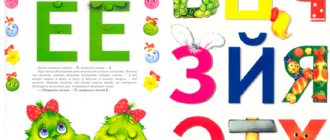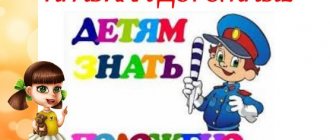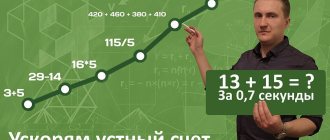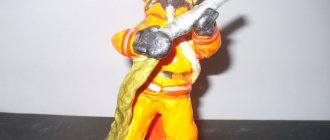If your child has already become familiar with the letters, but has difficulty reading, then the section Reading by Words and Fluent Reading of Adapted Texts will help you
Program "Letters - Words - Sentences" - learning to read online.
Click and start practicing letters, syllables and word reading
What does a letter of the Russian alphabet sound like?Can a baby recognize a letter by its sound? You need to select the correct answer and click the mouse The baby will like the game and he will play it with pleasure. Parents do not have to force their child to learn letters, since all classes are conducted in a playful way. The game can be played from any computer device. During the game, memory develops, the child learns to concentrate his attention, and trains his intellect. In a fun playful way, the child will learn the letters of the Russian alphabet. An online game for children that teaches them to understand the letters of the Russian alphabet by ear |
Recognizing letters by ear for hearing developmentWhat letter sounds when you click on it with the mouse? Choose the correct answer in the column on the right. In order for the announcer to repeat the sound, just click on the picture with the loudspeaker again. The game “Learning letters and recognizing their sounds” will help your child prepare for school. Having mastered this game, the child will know the alphabet. Teaching children letters and the alphabet. |
Build a word from letters and learn to readCollect letter puzzles and memorize letters. Each object in the game can be clicked and listened to how it sounds. When you click on the picture, the announcer's voice sounds. When you click on a letter, you will hear the name of the letter. The baby's task is to click on the letters in the correct order. After the task is completed, the computer offers the next task. The tasks are divided into several difficulty levels: Collecting three-letter words | Collection of four letter words | Collection of five letter words | Collection of six letter words | Collection of multi-letter words | |
Memorizing letters of the Russian alphabet - online training for preschoolersMemorizing letters - finding a letter in a list. The first thing you should start learning to read with is memorizing letters. Moreover, the principle here is very simple - the more the child repeats what the letters look and sound like, the faster the memorization process will occur. Level 1 | Level 2 | Level 3 | Level 4 | Level 5 | Level 6 | Level 7 | Level 8 | You choose a difficulty level sufficient for the lessons and continue studying. Remember that babies get tired quickly, and it only takes 1-5 minutes for them to get tired. Based on this, determine the complexity and duration of classes. |
What letter does the word start with?What letter does the word start with? Online training on teaching a child letters. Phonetic hearing training What letter (sound) does the word begin with? Choose the correct answer in the column on the right. In order for the announcer to repeat the sound, just click on the picture with the picture again. |
Find the word in the matrixDevelopment of concentration skills. Word search. The exercise develops the child's observation skills and also stimulates the study of letters. Every time the child looks for a certain letter, he repeats it and tries to find it. |
Find words with a specific letterA speech therapy exercise that can be used to introduce a child to letters and sounds. Click on all the pictures with the desired letter. When you click on the picture, the announcer names the item and a frame appears around the picture. To remove the frame, click on the picture again. |
Memorizing letters - which letter is hiddenBlots are placed on top of the letter - the child needs to understand what the letter is and click on the correct answer. Each letter is clickable. You can also choose your blot difficulty level by clicking on the type of mask you like. Letters are the basis of reading. Memorizing them is quite simple - the child must see them, hear them, write them, taste them, and make them a sufficient number of times. The more the child repeats what the letters look and sound like, the faster the memorization process will occur. |
Reading words by syllablesSlow reading speed is also associated with a child’s weak vocabulary. What should I do? It’s very simple - replenish, replenish and replenish again. For example, reading unclear words and explaining them Especially to solve this problem, I collected almost 14,000 Russian words and divided them into classes: Three-letter words (400 words) | Four letter words (1000 words) | Five letter words (2000 words) How many three-letter words do you know? And, more than 400 of them refuse! Oh, there are more than 1000 four-letter words. Read the words together and explain their meaning to your child. |
Expert Tips: How to Learn the Alphabet
Parents are constantly looking for new, quick ways to learn the alphabet with their child, but fast does not mean quality.
Additional Information! For a comfortable study, you should not forget about the peculiarities of the physiology and psychology of children (age and characteristics of their thinking).
Baby studying
Why teach your child the alphabet?
The alphabet is the basis of all languages. This is a strict sequential construction of letters, which is the key to all documents and books.
Knowing the alphabet will do nothing for a small child. He can easily memorize it, but he will not learn to read. It is better to leave the alphabet for elementary school, where it is needed, and learn the letters with your child without a strict sequence.
At what age should children already know all their letters?
The required level of brain development for reading is usually formed by 5 years, less often by 4-5. Therefore, there is no point in trying to force a child to read at an earlier age. It is better to broaden your horizons, develop speech and pronunciation, teach you how to ask questions correctly and teach you to give answers.
Taking into account age characteristics when learning about letters
In young children, the visual-effective type of thinking dominates, and upon reaching the age of five, the brain will begin to actively perceive iconic images and abstract presentation of information.
Note! By the age of 4, a child must learn basic knowledge for a comfortable future life. He focuses his attention on social connection with the world, so it is not recommended to burden him with unnecessary and complex information, bringing him to tears.
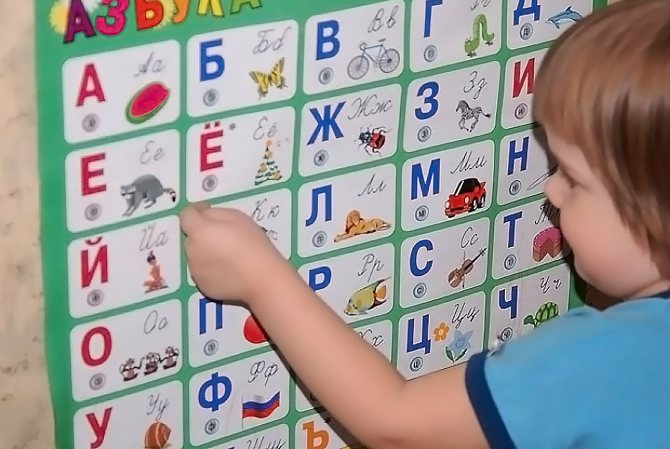
Learning the alphabet
Any activity with your baby is a fun game
Kids cannot concentrate on one activity for more than 10-15 minutes, so the duration should be limited, otherwise attention will be scattered and the child will stop learning new information.
A standard academic lesson is not suitable for children, so you should try to present any learning as an unobtrusive game that will be interesting to him. It is better to use a variety of tasks:
- poetry;
- songs;
- tongue twisters and riddles.
Note! This will provide the child with immersion in the process and facilitate the perception of new knowledge.
Training rules
- Play is almost the only opportunity to teach at this age. He must be passionate about what he is studying. Therefore, it is necessary to use various games and aids to make learning the alphabet for young children 4 years old easy and simple.
- Classes should be short, no more than 15 minutes, but quite frequent.
- Training can begin if the child’s oral speech is sufficiently developed. If not, then you need to use the services of a speech therapist.
- If your child suddenly loses interest in activities, then something is going wrong. We need to find out.
- We must remember that a child has every right not to know something and not be able to do something!
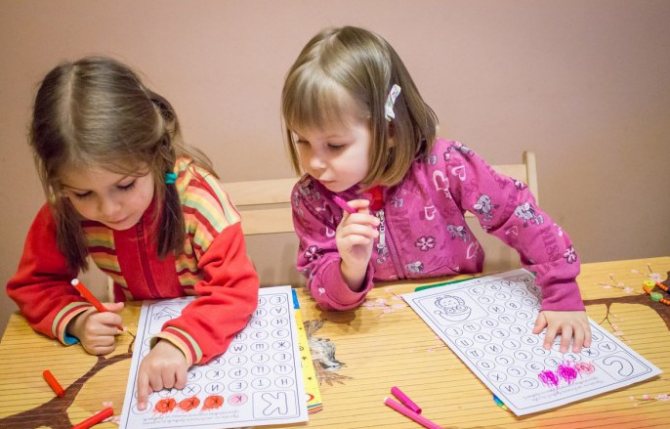
Collaborative learning through play is very effective - You cannot compare your child with others. Assuming that someone is better will not produce good results. Each baby is an individual!
- Of course, an individual approach is needed.
- Studying if your child is in a bad mood is a waste of time.
Understanding that moderation and rationality are important in everything will lead to the fact that the baby will master the alphabet quite quickly.
You cannot demand anything beyond the bounds of your child or force him to learn letters.
He should be interested, he should be passionate about the process and want these activities. And if this is not the case, then maybe it’s worth postponing the lessons or trying another, more suitable method? The main thing to remember is that children learn best by playing! leave a comment
How to teach a child to memorize letters: techniques
There are many interesting and easy ways and techniques in the world to learn the alphabet. They can be presented both in a classic form and in the form of computer games, modeling or special coloring books.

Letter coloring pages
Classic techniques
The basic option for learning the alphabet is to use cards with letters, syllables and images to consolidate associations and develop visual memory. ABC is also a great option to teach basic literacy.
Note! During learning, you should not rush; if the child is tired or has stopped studying, it is difficult for him to remember new things, it is worth taking a break and returning to this moment later.
First, you should memorize the basic vowels (O, U, A, I), and after that move on to simple consonants (M, N, T, B, P, G). The child must learn to pronounce not the name of the letter, but its pronunciation. That is, not “ZhE” “EN” “BE”, but “LJ”, “NN” and “BB”. You should start learning hissing sounds later, when the baby remembers simpler sounds.
It is necessary to teach letters to study both at home and in the fresh, especially summer air: it is worth getting the child interested in recognizing previously learned letters on children's and adult billboards, signs, and English inscriptions online in games.
Author's methods
All conditions have been created, a large number of proprietary methods to learn letters, sounds and the alphabet. Each method has its own advantages and disadvantages.
Drawing classes using crumpled paper in kindergarten
Important! You should not try to use and combine all methods at once. It is worth focusing on the technique that is comfortable and interesting for the baby to work with.
Learning letters: Polyakov’s game technique
The basis of Polyakov’s method is multiple showing and voicing groups of symbols with their gradual replacement. In the Russian language, groups of rhyming vowels are formed (E-E, A-Ya, O-Yo, Y-I, U-Yu).
The duration of classes is only 7-10 minutes, the frequency is 2 times a week. In your free time, you need to consolidate previously covered material.
This technique uses letter cards and a playful approach, which makes the process easier and more interesting for the child.
Zaitsev cubes
Cubes will help in learning to read from 2 years old. Learning occurs like an exciting game, during which children will begin to read much earlier than they get bored with the activity.
Principles of Zaitsev’s technique:
- Systematic presentation of information.
- Visual presentation of information that uses different channels of perception.
- Presentation of information from specific to general and vice versa.
The main principle of the methodology is teaching not by syllables, but by warehouses. Arrangement is the consonance of a consonant and vowel sound, a separate vowel sound in the form of a syllable or a separate consonant sound in a closed syllable, as well as a consonant with a soft or hard sign.
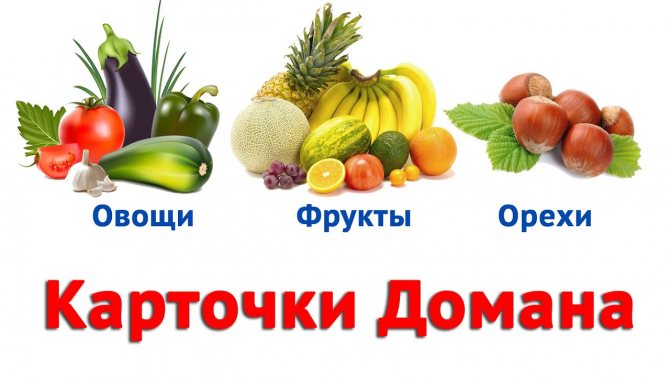
Doman cards
Doman cards
From birth, the brain is tuned to study and understand the world around us. With this feature, you can begin successful early learning. The technique helps to develop a thirst for knowledge, lays the foundation for a high level of intelligence and helps to learn early reading.
Note! You can use Doman cards for learning from the age of six months.
They represent an image and a word-inscription denoting it. Most often, they are presented in thematic sets.
The sequence is built from simple to complex: it starts with simple words, then phrases and simple sentences are studied, then they move on to common sentences and begin to read.
Methodology of Olga Soboleva
Olga's technique is a creative approach to the process of learning sounds and letters, where the dominant type of memory is involved. The learning process is divided into three information sections for:
- visuals;
- kinesthetics;
- auditory
The learning process is based on a game form with a smooth transition to working with books. It is necessary to help the child love the printed word, and not be afraid of it.
Recommended age for starting classes is 3-4 years.
From the alphabet to reading
When a child learns the Russian alphabet, confidently recognizes all the letters in different words and can draw or sculpt them on his own, he should move on to reading. Because learning the alphabet is necessary precisely so that the child can read. If knowledge is not used, it will hang like an unnecessary burden, and by school time it will be forgotten. Therefore, you should not learn the alphabet too early: at 3–4 years old, a child is simply not interested in reading books to learn something new. He is more interested when his mother reads. And vice versa, by the age of six, a child will be glad to have his own books to read them himself.
How to teach a 4 year old child the alphabet at home?
Many parents wonder how to learn the alphabet. There are many ways, but the most effective is learning through interesting games that you will want to return to.
Games for learning the alphabet and numbers
There are many games to help you learn letters and syllables.
Note! You shouldn’t get hung up on one method; the best option would be to combine several types of games so that the learning process remains fun even after several weeks of classes.
Learning by playing
The game form of presenting the material facilitates its easy assimilation. Children love to play, so if you present educational material through games, the child will learn with pleasure.
As a game you can offer your baby:
- modeling;
- coloring books;
- cutting letters from different materials;
- assembly of cut cards with the image of letters.
Let's make letters
Modeling is a very useful learning option. It uses several sensory organs at once and helps in the development of hand motor skills.
Letters can be assembled from different pieces prepared in advance, or they can be folded from long “worms” by assembling and twisting into letters.
Coloring the letters
Coloring can be an excellent teaching material. The alphabet can be presented in the form of pictures or pure images of letters.
Note! If a child has just begun to learn letters, images with letters and pictures will be more suitable for him, and the posted images will help him remember the letters through associations.
Studying traffic rules with preschool children
Cut out letters from paper
This method will add variety and help develop fine motor skills. It is useful to cut out paper blanks (rectangles, squares and circles) and fold letters from the parts together with your child.
Edible letters
The child will be more interested in the process if learning is associated with positive emotions. Making letters edible is a great way to spice things up.
You can bake cookies together in the form of the alphabet, put together letters and syllables from chopped vegetables, and also draw letters with jam on the surface of pancakes and porridge.
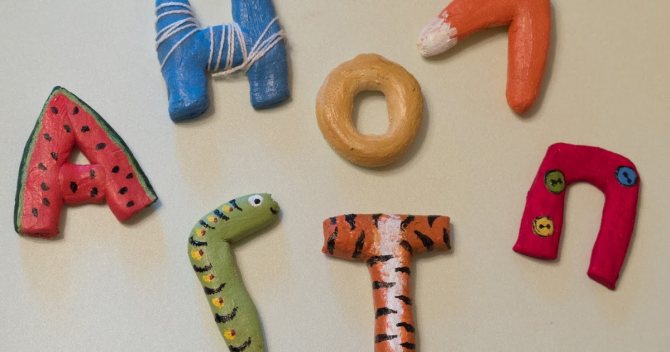
Modeling letters
How to learn the alphabet on your own with a 5-6 year old child?
The age of 5-6 years is optimal to start learning to read. The main thing is to teach him to speak correctly so that the teacher does not have to reteach him. The same exercises are suitable for training as for three to four years old.
Game method for learning 10 vowels in 5 lessons
This technique was proposed by Glen Doman.
Note! It is based on repeated display and sounding of groups of symbols with their gradual replacement. For this purpose, special cards are issued, which are divided by topic.
The process is divided into 5 lessons:
- Studying pairs of vowels (A-Z, O-Y) using easy verses - “This is A”, “This is I”. After the first lessons, it is necessary to consolidate the material, and only then move on to the next step.
- Study of the first three vowels (A-Z, O-Y, U-Y) using the same verses. The first three letter pairs are shown to the child, and the remaining two are pronounced independently so that he does not make a mistake.
- Study of three pairs of vowels (O-Yo, U-Yu, Y-I). From this moment, after adding a new pair, one of the old pairs is removed. The total number of letters represented must be no more than six. The first 4 letters are voiced by the baby, and the remaining 2 are named by the adult, not allowing anyone to make a mistake.
- By the fourth lesson, vowel pairs are memorized (A-Z, O-Y, U-Y, Y-I). Afterwards, the last learned vowels (Y and I) are consolidated.
- By the fifth lesson, all 10 vowels are memorized; all that remains is to consolidate the last learned vowels (E and E).
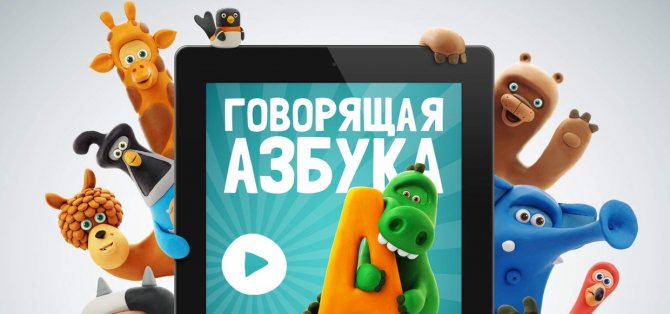
"Talking ABC"
Game method for teaching consonants
The following games are good for learning consonants:
- Houses. Prepare two houses for consonants and vowels. The letters must be attached to the corresponding house, while simultaneously pronouncing their sounds
- Guests. The same two houses are used. The letters decided to get to know each other. For example, the sound “G” came out first and decided to call the sound “A” for a walk. They pronounce the sound of the letters out loud and ask what syllable it will be.
- Ball game. The parent throws the ball to the baby and says the word. The child only catches words that begin with a vowel or consonant. The second version of the game is for an adult to throw a ball, saying “vowel” or “consonant.” The child names a word that begins with a vowel or consonant.
Putting the letters in order
Arranging letters in alphabetical order is one of the final stages of learning. Electronic or paper posters depicting various objects and letters can help.
Note! The use of posters combines visual and associative learning principles, which makes the learning process easier for the child.
Learning the letters of the Russian alphabet in a playful way
We offer you an online service for learning the Russian alphabet for children. The principle of the games is that for each letter of the alphabet, corresponding pictures with images of objects, animals, products, plants, and so on are selected. For each letter, the name of the picture begins with that letter, so the child remembers the letters by naming words and looking at pictures. We can’t say that this is a game, it’s more of an online book for learning the alphabet.
Having mastered the tools of reading - its technique - and understanding the text, the child must advance from the preparatory to the main stage of reading activity, master certain knowledge, abilities and skills in perceiving works of different genres, and active perception, expressed in attitude, assessments, emotional impressions, understanding of meaning and subtext. The ability to read is a special skill.
To make it more convenient for you, we placed buttons with a choice of letters above the pictures and made them large enough so that children can click on them themselves. After all, a child will learn the alphabet even on his own. Parents only need to help the child. In addition to learning the alphabet with the help of our service, a child can learn new words from pictures. Owners of tablet computers (for example, iPad) can open the Alphabet for children, and the child himself will click on the letters and look at the pictures (we checked :).
Electronic poster “Talking ABC”
The educational sound poster is a great addition to standard alphabet learning techniques.
It combines visual and audio perception, allowing you to learn the letters and sounds of the alphabet, as well as numbers from 1 to 33. The poster features several modes - song, riddle or task, which allows you to diversify the learning process.
The posters differ in sound and pronunciation principles. It is recommended to choose those where there is a pronunciation of letters as sounds.
Learning the alphabet is an important step in the life of every child, which will allow them to gain new knowledge and analyze it. It is worth treating this period with patience and helping your child learn through a playful approach and support.
